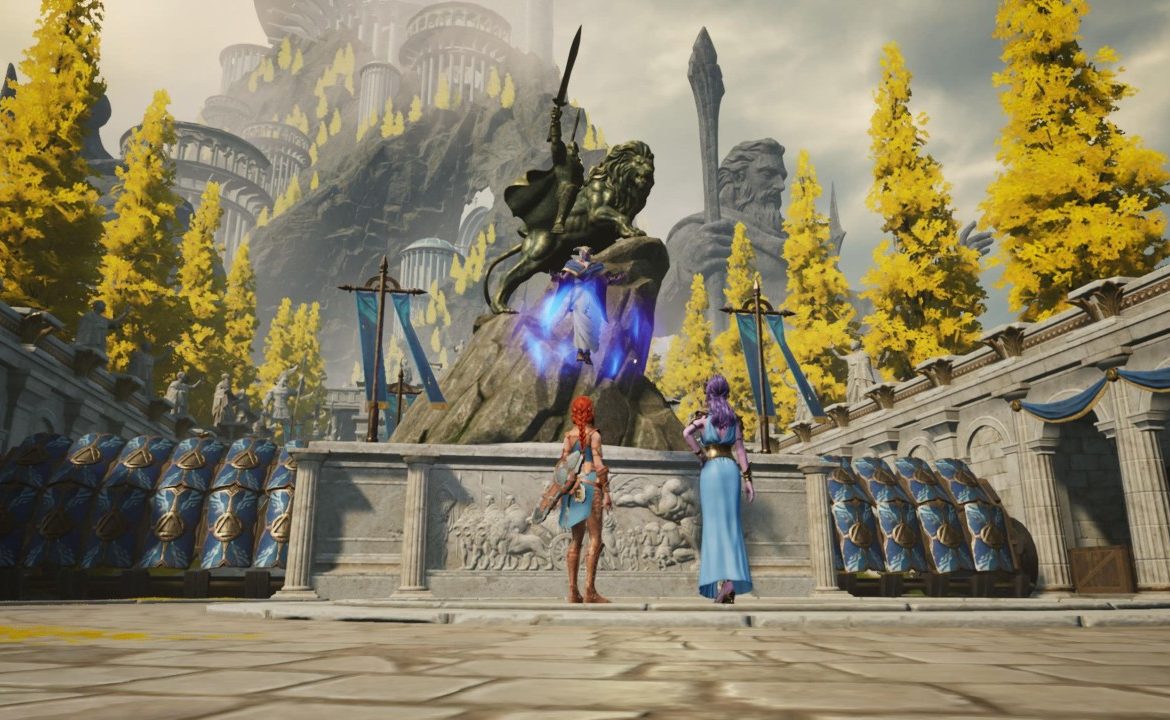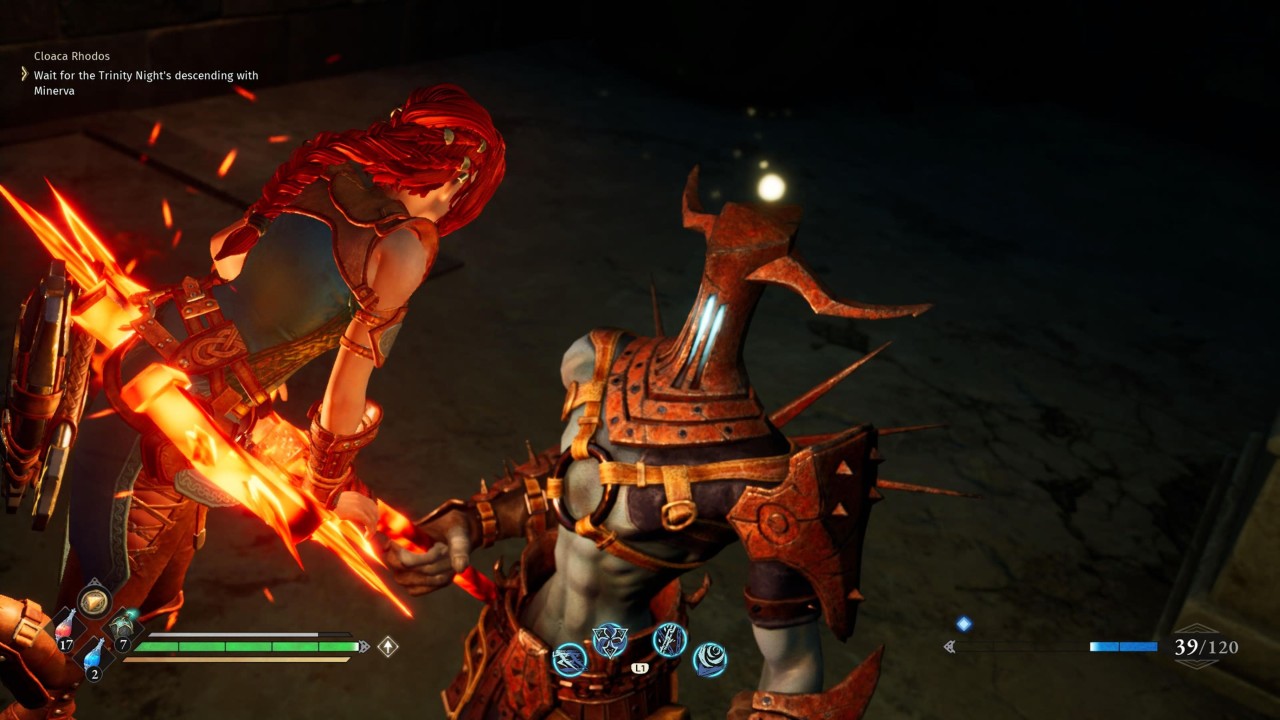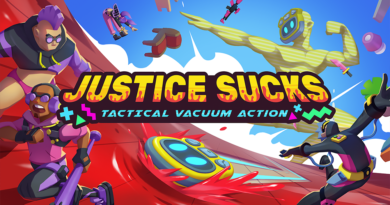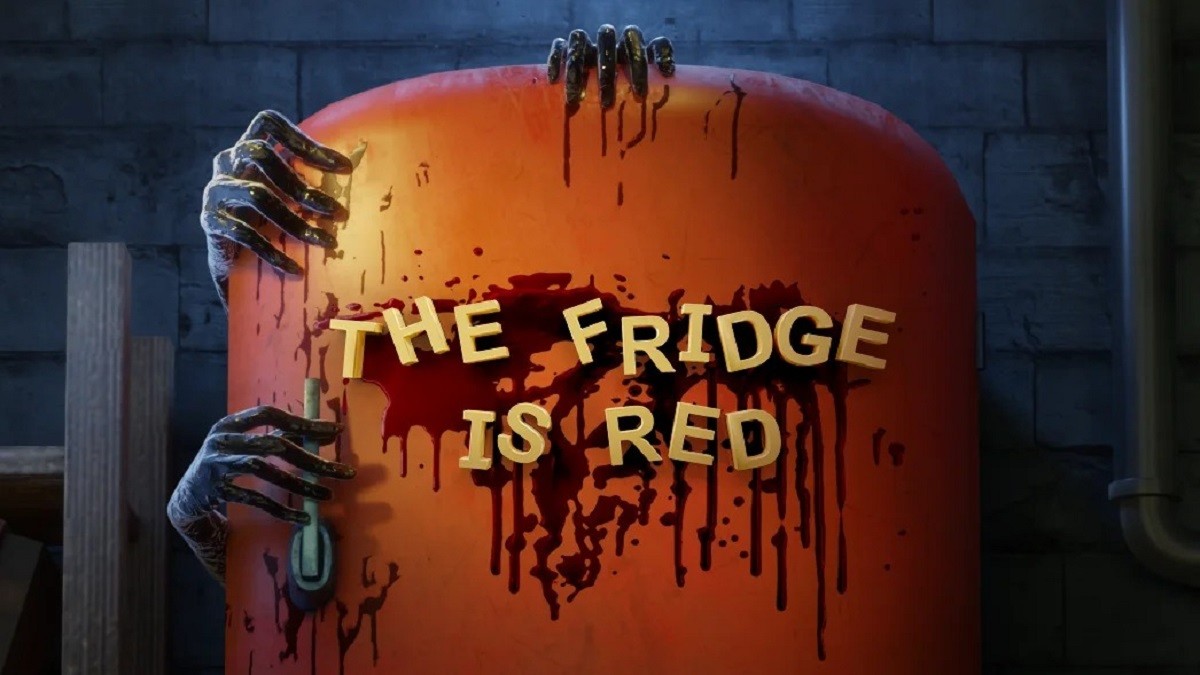Asterigos: Curse of the Stars Review (PS5) – Starry-Eyed Surprise
It’s no secret that FromSoftware’s Souls series has had a massive effect on modern action RPGs. It spawned an entirely new genre in the “Souls-Like” and inspired a slew of games that try to capture the same feeling those games evoke. It’s also become so prevalent that I’ve honestly gotten burnt out by them, especially when so few stand up to the quality of FromSoftware’s titles.
Enter Asterigos: Curse of the Stars, an indie game that lifts the best elements from the Soulsborne series while sprinkling in differing mechanics to feel completely fresh. It’s less Souls-like and more Souls-lite.
Set in the Greco-Roman-inspired city of Aphes, Asterigos: Curse of the Stars sees the player controlling Hilda, a young warrior following after her father and his band of men that entered the city but never returned. Upon entering, she finds that the city has been struck with the titular curse for the last thousand years. The Aphesians have been unable to age the entire time and have lived for hundreds of years under martial law. Hilda quickly meets with a group called The Adherents, and in exchange for helping them save the city, they’ll help Hilda find her father.
While it starts as a fairly standard setup, Asterigos has deeper themes underneath it throughout its 30-hour runtime that tackle subjects like class/caste systems, family VS duty, survivor’s guilt, xenophobia and political/religious conflicts. It’s also where it differs from the Souls game it clearly takes influence from: it’s a story-heavy game, and Asterigos kept me engaged through its entirety. It’s filled with compelling and surprising layered characters, each with their own motivations, histories and side quests to flesh out not just themselves but the world of Asterigos.

Aphes is a city full of history, and there’s a ton of worldbuilding throughout conversations and many (over 250) richly detailed documents littered around the place. It’s not just in its written content, either: the city is meticulously detailed and has genuinely outstanding design. Like its inspiration, Aphes is one big map of several interconnected areas. Each of these areas is filled with gorgeous architecture and fantastic art design. Visually it shares a lot in common with Immortals: Fenix Rising or Kena: Bridge of Spirits. It’s packed with charm, and it’s gorgeously animated, too.
Asterigos is loaded with attention to detail in this regard; be it character models, environments or its general level design, it all comes together to make Aphes feel like a real place that’s been falling apart for a millennium. It’s also got some of the best level shortcuts I’ve seen outside of FromSoft’s own. It’s outstanding, and I’d often find myself taken aback by how well it connected to the rest of the area.
All these areas expand outwards from Asterigos’ central hub: The Shelter. It’s where you go to get your main quests, upgrade your equipment, buy items, and talk with the members of The Adherents. The Shelter is a great hub area that expands with new features, functions, and characters as you progress through Asterigos’ story. It’s also got a great piece of music associated with it. The soundtrack is overall pretty great, with some areas having great use of diegetic sound as you head for a boss.
So Asterigos has a great world to explore, but none of that would matter if its gameplay didn’t stack up. Thankfully, it does, and it’s within its gameplay that it starts to differ from the Souls-like formula and sets it apart in a sea of similar titles.
Firstly, difficulty options. You can choose one of three options: Story, for those looking for an easy time; Adventure, this game’s default; and Challenge, which is described as for the player who “embraces breaking self-limits or conquering what others could not overcome”. I played through Asterigos on Adventure, and it was never too hard. It’s by no means a cakewalk, especially towards the latter half, but I did find it more forgiving than other Souls-likes, so if you want that harder difficulty, you’re best picking Challenge. There’s also new game plus, which carries over your level and some equipment/items while increasing the difficulty to match.

The concept of the “corpse run” simply doesn’t exist in Asterigos. Instead of dying and leaving behind your Stardust (Asterigos’ Soul equivalent) to collect, you just lose 10% of whatever you had when you died.
Levelling up is XP based. You only use Stardust for buying items or upgrading/crafting gear (more on this soon), with XP gained simply by beating your enemies. You get 1-2 Attribute Points when you level up to bump one of three attributes: Precision which increases your damage, Constitution which increases your max HP, and Arcane which increases your Skill Damage and AP recovery rate.
You’ll also receive a Talent point to purchase skills, perks and augments for each of the game’s 6 weapons from the Talent Disc (a branching skill tree). You can level up from the game menu at any time, so you don’t need to wait to get to a Conduit (Asterigos’ Bonfire equivalent) or a specific NPC.
The most immediate change from other Souls-inspired titles is in Asterigos’s frankly excellent combat system. You’re given all 6 weapon types almost immediately. Each weapon starts with a basic 3/4 hit combo and a unique technique: The Sword and shield are for people that want a strong defence. The daggers have an evasive move with high invincibility for people (like myself) who enjoy high-mobility playstyles. The spear has a bit more range and gives you a parry for players that like a more active defence. The hammer hits hard and has a whirlwind swing that hits enemies around you. The bracelets attack with magic for mid-range combat and gives you some area control by placing magical mines. The staff is a long-ranged option, with its ability to aim it like a magical sniper.
Each weapon can be upgraded throughout the game up to +10 at The Shelter’s Blacksmith with various crafting materials, which simply boosts the weapon’s damage.

What’s truly impressive is that every single one of these weapons is fun to use right off the bat, and you can equip any 2 of them at once and change them at any time. Each weapon combos in and out of the other with a special attack. There are also moves for attacking from your dodge and sprint. Every weapon has a lot of utility, and experimenting with different combinations makes for a lot of fun.
I gravitated to the daggers for their speed and the dodge ability, with the staff for some added range. It even gave me some extra mobility as it has a blast that shoots you back if you combo into it from your other weapon, which was great given the daggers are a very up close melee option. I should also mention that regular attacks don’t use stamina (SP). It’s only used for your dodges, sprinting and each weapon’s unique technique.
You also have an extra meter, the AP meter. This is for using any skills that you unlock from the Talent Disc. Each weapon has 4 skills, with another 4 skills being universal. You can assign up to 4 skills at once, and each will spend differing amounts of AP. There are toggleable perks/augments in the Talent Disc that will alter how weapons function. For example, you can switch the dagger’s 4th hit to be a move you can use endlessly; or unlock the ability to charge your staff shots at the cost of more stamina.
There’s even a separate system for switching between 4 different elements to exploit weaknesses by dealing different damage types. It’ll even give certain moves completely different effects. There’s loads of freedom with Asterigos’ combat systems, and you engage with it as much or as little as you want.
All these features combine to make one of the most enjoyable combat systems I’ve played in a while. It manages to feel simultaneously unique and familiar, which is honestly a sentiment I hold for Asterigos as a whole. It’s just excellent, a true joy to play. It’s some of the most genuine fun I’ve had with a game in a long time.
Asterigos doesn’t have different armour sets to equip that change your stats or alter Hilda’s appearance (although there are alternate costumes). Instead, you get Trinkets, equipable items that will give you +/- to your various damage resistances. You unlock these by crafting them from blueprints you find throughout Aphes, or sometimes as a reward for completing a sidequest. You can equip up to 4 Trinkets at a time. Some grant additional effects, like healing when you deal damage, extra HP/AP/SP, or increasing the XP you receive. There are even a couple of Trinkets you get early on that just make the game harder, one lowering all resistances by 30 points while the other makes you unable to receive any XP.

Asterigos also has this really great way of pacing out its features. As soon as the map started getting too big to walk between, I unlocked the ability to teleport between any unlocked Conduits. When I got further into the game but ran out of respec’ing items and wanted to change my build, a new character joined The Shelter who would let me respec by talking to them.
It also knew when to wrap up. It’s still a pretty big game, with it taking about 30 hours to beat (I missed a handful of side quests but beat every optional boss with a trophy associated with it), but it felt right to end where it did. It’s so damn confident in its delivery and never lingered too long on an area or plotline.
I honestly loved my time with Asterigos, if it’s not clear already, but it’s not without its issues. Probably the biggest problem I had was that in smaller areas the camera has some trouble, making it hard to see in combat which was frustrating. Once or twice I ended up stuck in an object that I’d rolled into, but I simply used a teleport item to get unstuck. There is one area with some very light platforming, but you don’t have any control of your jump in the air. Thankfully it’s a small amount of platforming, but it was a little frustrating and caused a handful of deaths due to some wonky collisions. The default controls felt a little unnatural to me, and while there’s no button remapping on consoles, there was a different control scheme which worked better for me (sprint on the square button just felt wrong). The game’s audio mix was a little off by default, but cranking the voice volume fixed it. Consumable items felt a little unresponsive to use, so I’d sometimes not heal as quickly as I wanted to.
Honestly, most of my complaints are minor nitpicks. All it needed was a little more polish to iron out these issues.
Acme Gamestudio has delivered an incredible debut with Asterigos: Curse of the Stars. If like me, you’ve been suffering from Souls-like burnout, this might be the game for you. It’s gorgeous to look at, constantly engaging and an absolute joy to play. Asterigos is not just one of the best indie games I’ve played this year, but one of the best, most complete games I’ve played in a long time, indie or otherwise. It’s an outstanding, honest-to-goodness adventure made with love, sincerity and attention to detail. It is incredible; play it.

Asterigos: Curse of the Stars is available now on PlayStation 4, PlayStation 5 (review platform), Xbox One, Xbox Series X|S and PC.
Developer: Acme Gamestudio
Publisher: tinyBuild
Disclaimer: In order to complete this review, we were provided with a promotional code from the publisher. For our full review policy, please go here.
If you enjoyed this article or any more of our content, please consider our Patreon.
Make sure to follow Finger Guns on our social channels. Twitter, Facebook, Twitch, Spotify or Apple Podcasts – to keep up to date on our news, reviews and features.




Thanks for the review, good that it has ng+